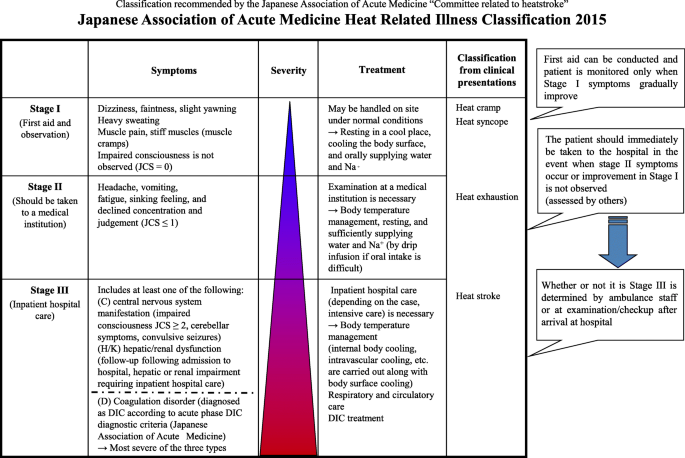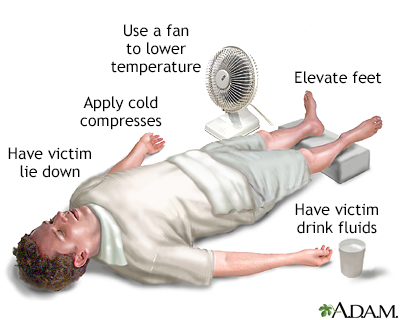As the temperature rises, so does the risk of heat-related emergencies. These can range from mild heat exhaustion to severe heatstroke, both of which require immediate attention. Understanding the signs, prevention measures, and appropriate treatment is crucial to stay safe during hot weather. In this comprehensive guide, we’ll delve into the world of heat-related emergencies, focusing on prevention and effective responses.
Heat-Related Emergencies: Prevention and Treatment
As the temperature rises, so does the risk of heat-related emergencies. These can range from mild heat exhaustion to severe heatstroke, both of which require immediate attention. Understanding the signs, prevention measures, and appropriate treatment is crucial to stay safe during hot weather. In this comprehensive guide, we’ll delve into the world of heat-related emergencies, focusing on prevention and effective responses.
Types of Heat-Related Emergencies:
- Heat Exhaustion: Recognizing the symptoms and risk factors.
- Heatstroke: Understanding the life-threatening nature of this condition.
Preventing Heat-Related Illnesses:
- Staying Hydrated: The importance of proper fluid intake.
- Dressing for the Heat: Clothing tips for hot weather.
- Avoiding High-Risk Situations: When and where to be cautious.
Recognizing the Signs:
- Identifying the symptoms of heat exhaustion.
- Knowing the critical signs of heatstroke.
First Aid and Treatment:
- Immediate actions to take when someone is affected.
- How to cool down a heatstroke victim.
When to Seek Professional Help:
- Understanding when to call for emergency assistance.
- The importance of early intervention.
Long-Term Effects and Recovery:
- Potential complications and their management.
- Steps to take for a full recovery.
Conclusion:
By familiarizing yourself with the various aspects of heat-related emergencies, you can protect yourself and those around you during scorching summer days. Remember, prevention is key, but knowing how to respond when necessary can be a lifesaver. Stay informed and stay cool to enjoy the summer safely.
Heat-Related Emergencies: A Spectrum of Severity:
Heat Cramps: These are painful muscle spasms that typically occur during or after intense physical activity in the heat. Cramps are often a sign that the body is losing essential fluids and salts.
Heat Exhaustion: Heat exhaustion results from excessive loss of water and salt through sweating. Symptoms include heavy sweating, weakness, dizziness, nausea, and a rapid pulse. If not treated promptly, it can progress to heatstroke.
Heatstroke: Heatstroke is a life-threatening condition that occurs when the body’s temperature regulation fails. Symptoms include a high body temperature, altered mental state, nausea, and rapid breathing. Immediate medical attention is vital for heatstroke.

Prevention Strategies:
Stay Hydrated: Drink plenty of water, especially when active or spending time outdoors. Avoid excessive caffeine and alcohol, as they can contribute to dehydration.
Wear Appropriate Clothing: Choose lightweight, loose-fitting, and light-colored clothing to help your body stay cool. Don’t forget a wide-brimmed hat and sunglasses.
Limit Outdoor Activities: During the hottest parts of the day, try to stay indoors or in the shade. If you must be outside, take frequent breaks and rest in the shade.
Never Leave Anyone in a Hot Car: Even a few minutes in a hot car can be deadly, especially for children or pets. Always check your vehicle before locking it.

Treatment for Heat-Related Emergencies:
Heat Cramps: Rest in a cool place, hydrate, and gently massage and stretch the affected muscles.
Heat Exhaustion: Move to a cooler area, drink water, and use cool compresses. Rest and monitor for improvement.
Heatstroke: Call 911 immediately. While waiting for help, move the person to a cooler place, remove excess clothing, and try to cool them down with cool, wet cloths or a bath.
Sunburn: If you experience sunburn, get out of the sun, cool your skin with a damp cloth, and apply a soothing lotion. Heat Cramps: Rest in a cool place, hydrate, and gently massage and stretch the affected muscles. Heat Exhaustion: Move to a cooler area, drink water, and use cool compresses. Rest and monitor for improvement. Heatstroke: Call 911 immediately. While waiting for help, move the person to a cooler place, remove excess clothing, and try to cool them down with cool, wet cloths or a bath.
To delve further into this matter, we encourage you to check out the additional resources provided here: Recognizing, Preventing, and Treating Heat-Related Illness | U.S. …

More links
Don’t stop here; you can continue your exploration by following this link for more details: Heat Stress | NIOSH | CDC
